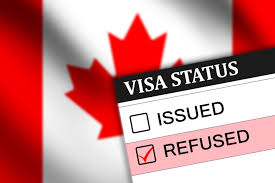Let’s be honest. Getting that refusal letter stings. You’ve planned, maybe spent weeks collecting documents, and in just a few words the officer says: “Application refused.”
It feels like the door slammed shut. But here’s the good news: a refusal isn’t the end of the story. At K7 Immigration, we’ve built the Recovery Plan—a structured, step-by-step way to figure out why your visa was denied and, more importantly, how to fix it.
Think of it less like guesswork, and more like detective work. Let’s walk through it.
Why do visitor visas get refused?
Visa refusals aren’t random. Officers almost always have clear reasons—you just might not see all of them on that standard refusal letter. The big ones we see?
- Weak financial proof. Maybe your bank statements didn’t add up or the officer wasn’t convinced you could fund the trip.
- Unclear purpose of visit. A vague itinerary or missing invitation letter can raise red flags.
- Not enough ties to your home country. If it looks like you don’t have a strong reason to return, refusal is likely.
- Immigration history or credibility issues. Past overstays, gaps, or inconsistent details can hurt your case.
Sound familiar? Don’t worry—these are fixable, but only if we know exactly what triggered the refusal. That’s where step one comes in.
Step 1: GCMS / FOIA notes — seeing what the officer actually wrote
Here’s the truth: that refusal letter you got? It’s just the surface.
- For Canada: Every decision is logged in the Global Case Management System (GCMS). Officers write notes explaining why they refused your application. The only way to see those notes is to file an ATIP request (under Canada’s Access to Information Act). That’s step one in every case we handle.
- For the US: There’s no GCMS, but you can request your consular records through a FOIA request with the Department of State. It’s your backstage pass to the officer’s notes.
Why does this matter? Because once we read the officer’s actual reasoning, the guesswork ends. We know what they saw, what they doubted, and what needs fixing.
Step 2: Building a stronger case
This is where K7 rolls up its sleeves. We take the officer’s concerns and build an evidence package that answers them one by one.
A few examples:
- Officer doubted your finances? We don’t just add bank statements. We build a financial snapshot—income proof, tax returns, employer letters, affidavits of support—explained clearly.
- Purpose of visit unclear? We prepare a detailed itinerary, hotel bookings, event registrations, or a host’s invitation letter that leaves no room for doubt.
- Ties to home country too weak? We dig deeper: property deeds, family obligations, employer confirmation of leave, proof of ongoing studies.
It’s not about sending “more” documents. It’s about sending the right ones, tied directly back to the refusal note.
Step 3: The re-application package
Now comes the part most applicants overlook: how the story is told.
